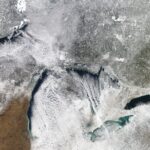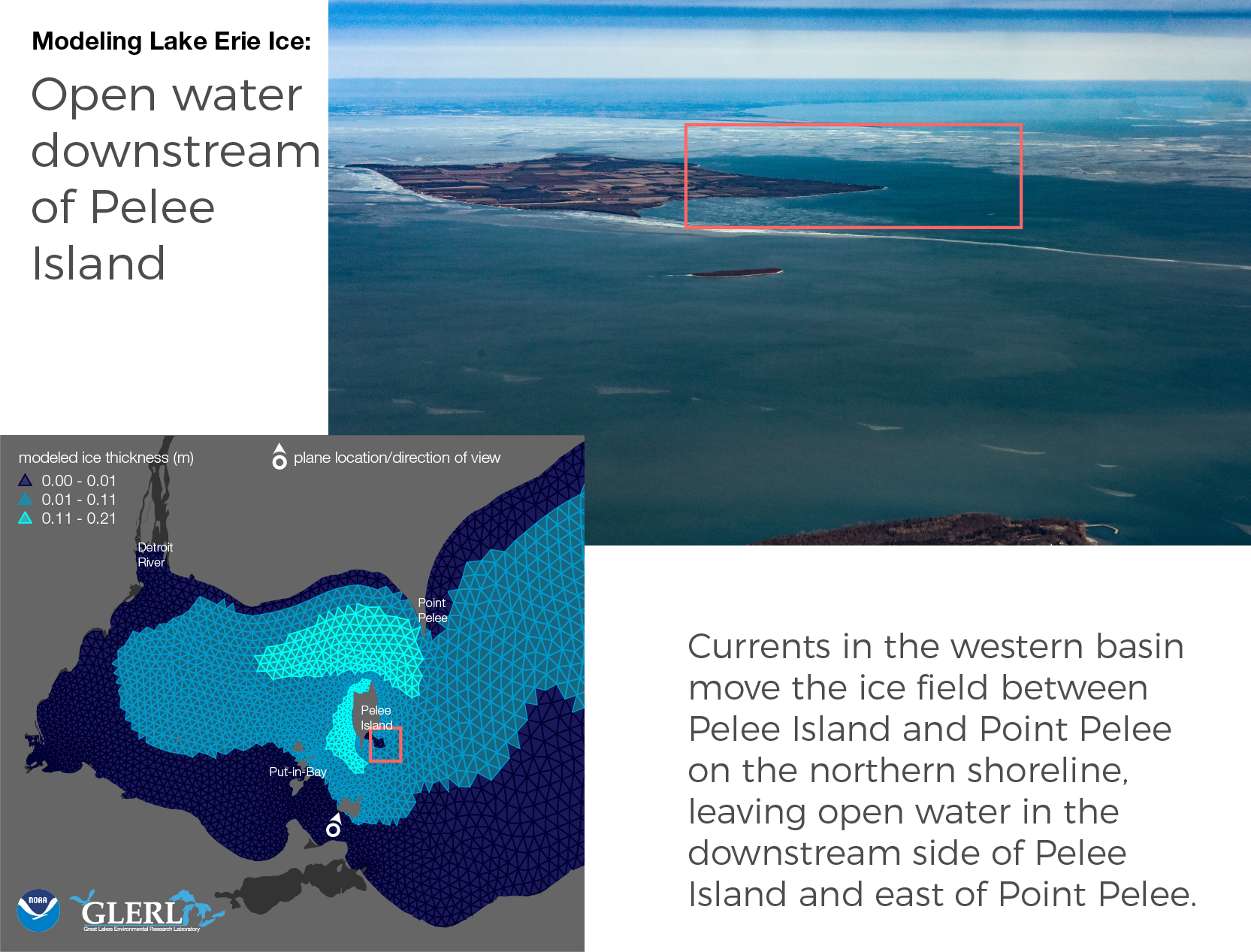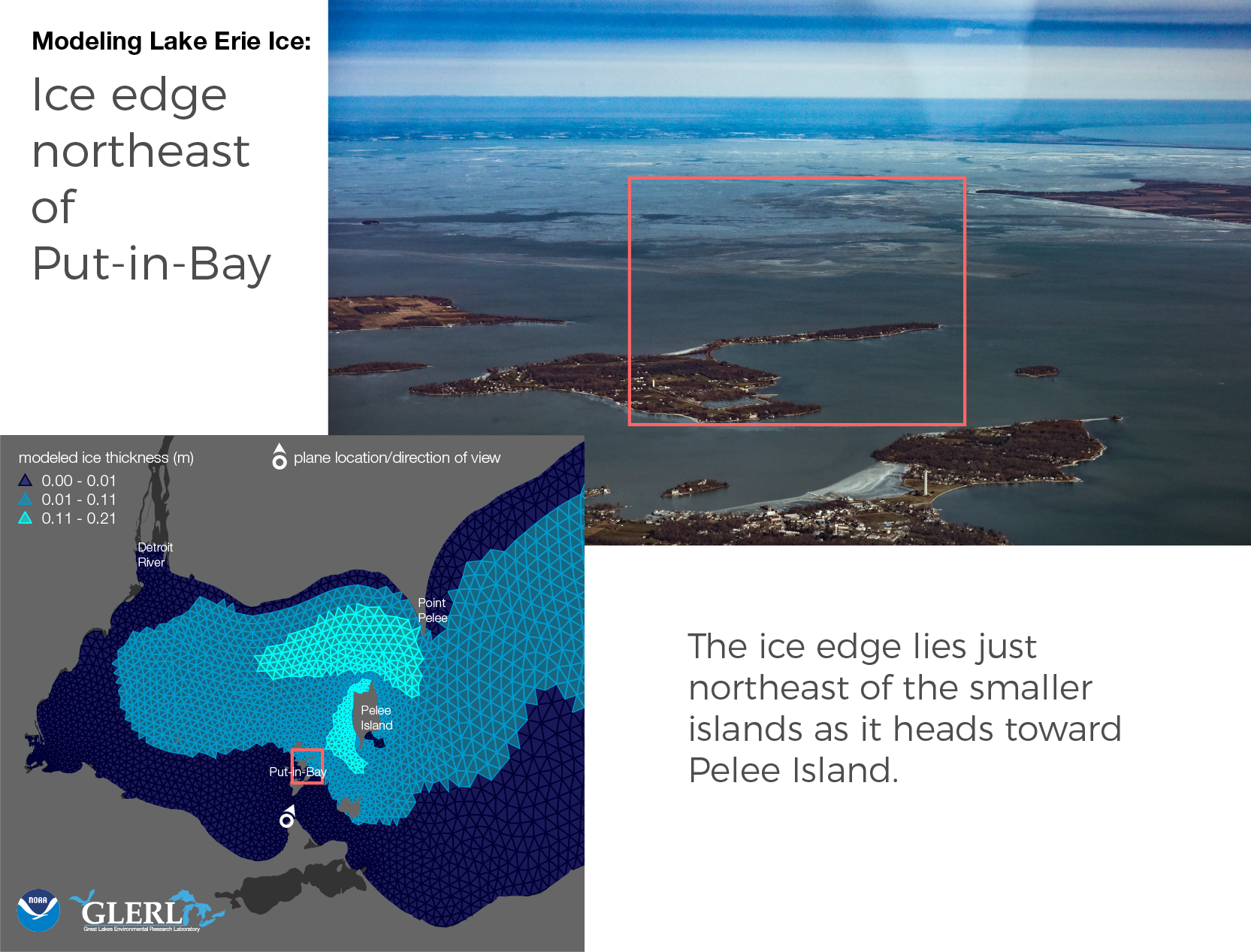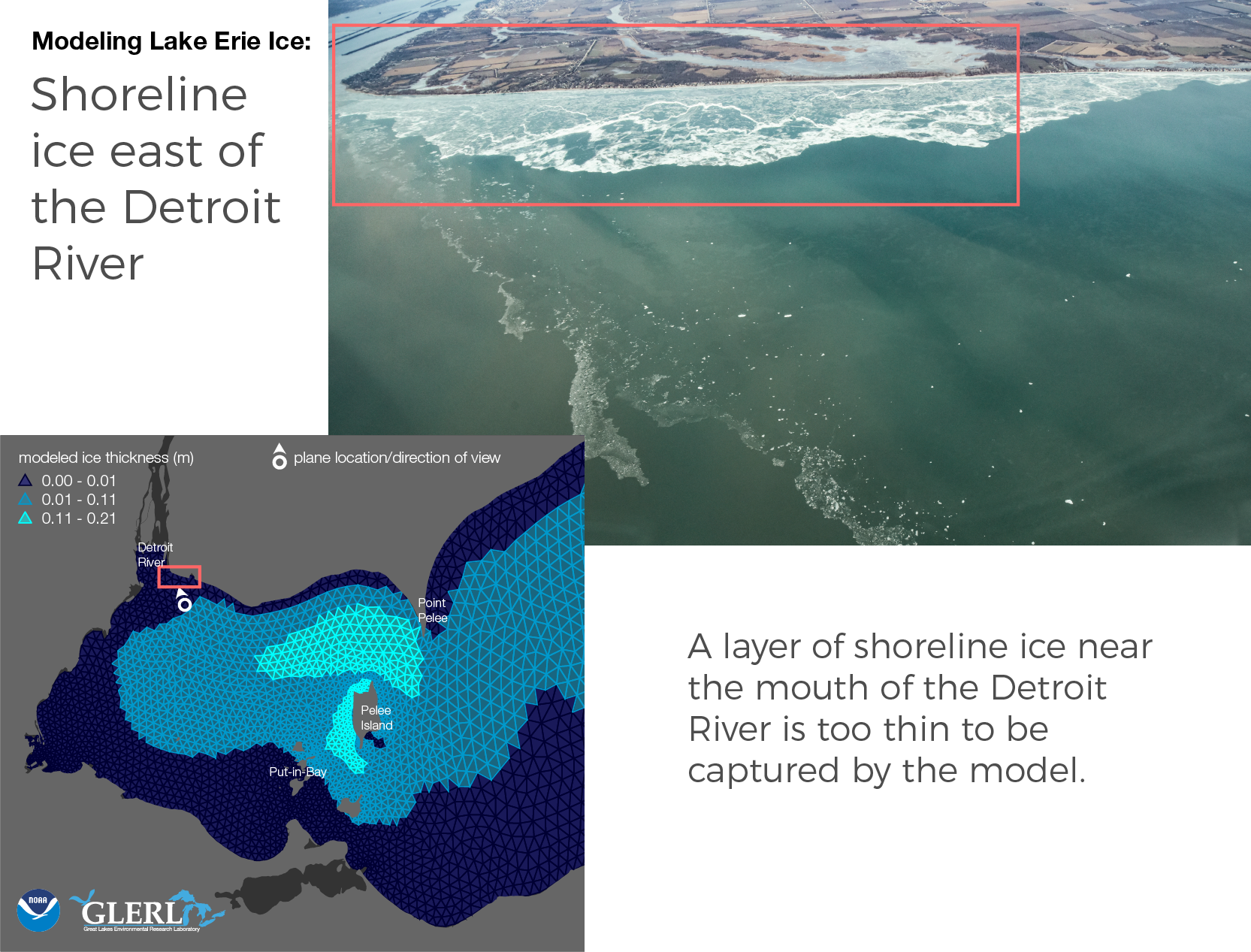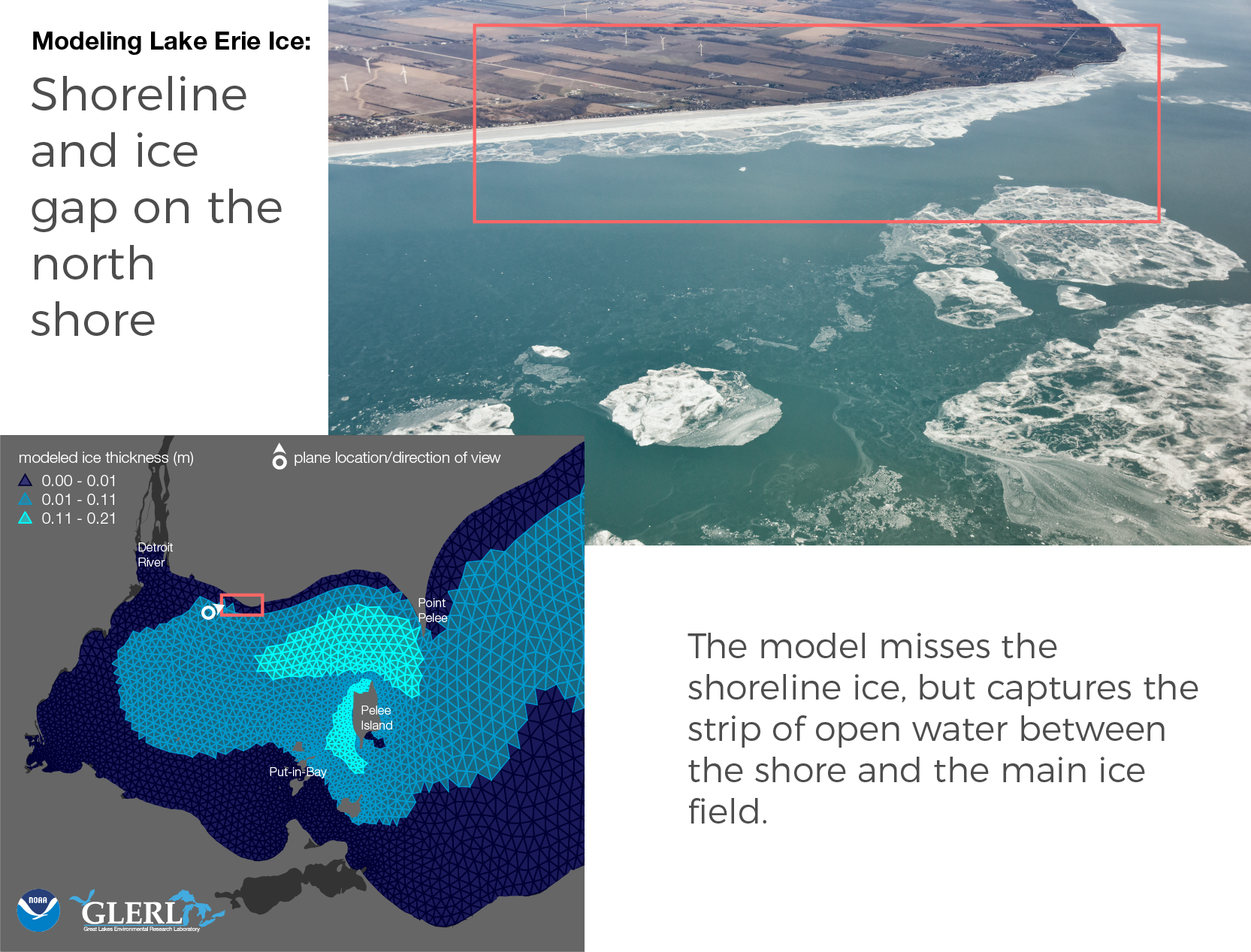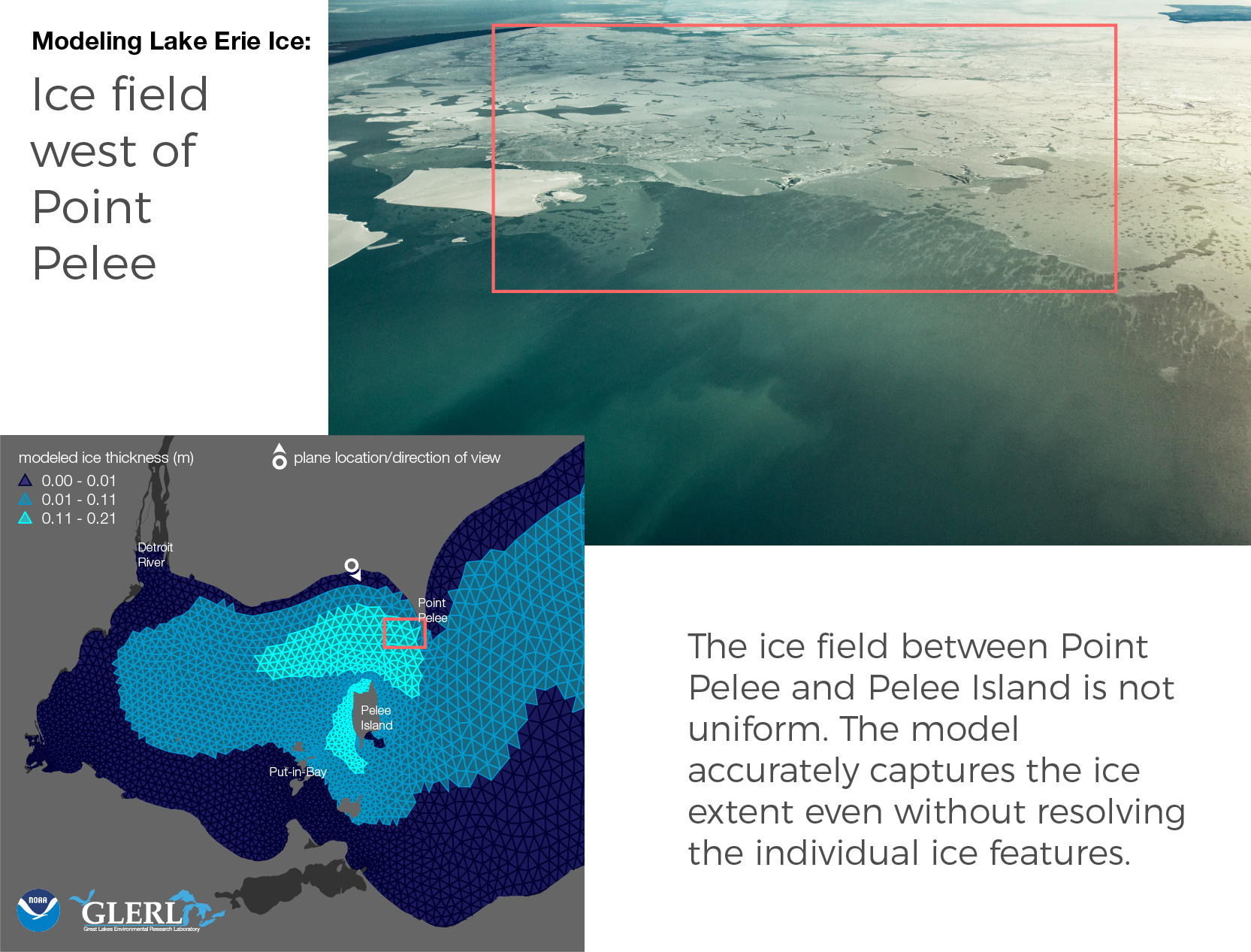The Great Lakes, along with their connecting waterways and watersheds, make up the largest lake system on the planet—more than 20% of the world’s surface freshwater! Water levels on the lakes change in response to a number of factors, and these … Continue reading
Tag Archives: Modeling

November 15, 2017
by Katherine Glassner-Shwayder
Comments Off on New algorithm to map Great Lakes ice cover
New algorithm to map Great Lakes ice cover
NOAA’s Great Lakes Environmental Research Laboratory (GLERL) is on the cutting edge of using satellite remote sensing to monitor different types of ice as well as the ice cover extent. To make this possible, an algorithm—a mathematical calculation developed at GLERL … Continue reading
June 28, 2017
by Katherine Glassner-Shwayder
4 Comments
Update on Lake Erie hypoxia forecasting stakeholder workshop (May 23, 2017)
Researchers partner with drinking water plant managers to forecast hypoxia in Lake Erie By Devin Gill, Cooperative Institute for Great Lakes Research and Kristin Schrader, Great Lakes Observation Systems Lake Erie’s “dead zone” not only impacts the lake’s ecosystem, but … Continue reading

May 10, 2017
by Nicole Rice
Comments Off on “Just Because the Blooms in Lake Erie Slow Down, Doesn’t Mean We Do”
“Just Because the Blooms in Lake Erie Slow Down, Doesn’t Mean We Do”
NOAA GLERL harmful algal blooms research program featured on Detroit Public Television As part of a series on The Blue Economy of the Great Lakes, NOAA’s Great Lakes Environmental Research Laboratory (GLERL) is featured in a short video, produced by … Continue reading
Aerial photo survey improves NOAA GLERL’s Lake Erie ice model
April 12, 2017 by Kaye LaFond
Understanding the duration, extent, and movement of Great Lakes ice is important for the Great Lakes maritime industry, public safety, and the recreational economy. Lake Erie is ice-prone, with maximum cover surpassing 80% many winters.
Multiple times a day throughout winter, GLERL’s 3D ice model predicts ice thickness and concentration on the surface of Lake Erie. The output is available to the public, but the model is under development, meaning that modelers still have research to do to get it to better reflect reality.
As our scientists make adjustments to the model, they need to compare its output with actual conditions so they know that it’s getting more accurate. So, on January 13th of this year, they sent a plane with a photographer to fly the edge of the lake and take photos of the ice.
The map below shows the ice model output for that day, along with the plane’s flight path and the location of the 172 aerial photos that were captured.

NOAA GLERL Lake Erie ice model output with all aerial photo survey locations — January 13, 2017. Map Credit NOAA GLERL/Kaye LaFond.
These photos provide a detailed look at the sometimes complex ice formations on the lake, and let our scientists know if there are places where the model is falling short.
Often, the model output can also be compared to images and surface temperature measurements taken from satellites. That information goes into the GLSEA product on our website (this is separate from the ice model). GLSEA is useful to check the ice model with. However, it’s important to get this extra information.
“These photographs not only enable us to visualize the ice field when satellite data is not available, but also allow us to recognize the spatial scale or limit below which the model has difficulty in simulating the ice structures.” says Eric Anderson, an oceanographer at GLERL and one of the modelers.
“This is particularly evident near the Canadian coastline just east of the Detroit River mouth, where shoreline ice and detached ice floes just beyond the shoreline are not captured by the model. These floes are not only often at a smaller spatial scale than the model grid, but also the fine scale mechanical processes that affect ice concentration and thickness in this region are not accurately represented by the model physics.”
Click through the images below to see how select photos compared to the model output. To see all 172 photos, check out our album on Flickr. The photos were taken by Zachary Haslick of Aerial Associates.
- Ice tail on Pelee Island. Photo Credit Zachary Haslick/Aerial Associates, Inc.
- Open water downstream of Pelee Island. Photo Credit Zachary Haslick/Aerial Associates, Inc.
- Ice edge northeast of Put-in-Bay. Photo Credit Zachary Haslick/Aerial Associates, Inc.
- Shoreline ice east of the Detroit River. Photo Credit Zachary Haslick/Aerial Associates, Inc.
- Shoreline and ice gap on the north shore. Photo Credit Zachary Haslick/Aerial Associates, Inc.
- Shoreline and ice gap on the north shore. Photo Credit Zachary Haslick/Aerial Associates, Inc.
- Ice field west of Point Pelee. Photo Credit Zachary Haslick/Aerial Associates, Inc.
- Ice field moving past Point Pelee. Photo Credit Zachary Haslick/Aerial Associates, Inc.
This gallery contains 0 photos
March 24, 2017
by Katherine Glassner-Shwayder
2 Comments
Lake Erie Hypoxia Forecasting Project Kicks Off With Stakeholder Workshop
A collaborative research team, led by Drs. Craig Stow of the National Oceanic and Atmospheric Administration’s Great Lakes Environmental Research Laboratory (NOAA GLERL) and Mark Rowe of the University of Michigan’s Cooperative Institute for Limnology and Ecosystems Research (CILER), will … Continue reading
GLERL researchers heading to AMS 2017
The American Meteorological Society’s Annual Meeting (AMS 2017) is upon us and researchers from GLERL and CILER (the Cooperative Institute for Limnology and Ecosystems Research), along with other partners, are hitting the grounds running on Monday with posters and presentations on climate, … Continue reading
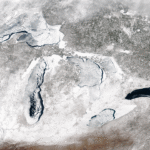
January 11, 2017
by Nicole Rice
1 Comment
Ice cover on the Great Lakes
Understanding the major effect of ice on the Great Lakes is very important because ice cover impacts a range of benefits provided by the lakes—from hydropower generation to commercial shipping to the fishing industry. Continue reading
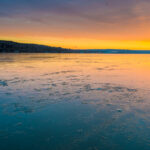
November 21, 2016
by GLERL Communications Team
Comments Off on Working to improve Great Lakes modeling
Working to improve Great Lakes modeling
Water and atmospheric processes are inseparable. Now, there is a supercomputer model that couples climate and hydrodynamic factors for the Great Lakes region. Continue reading
August 18, 2016
by Kaye LaFond
1 Comment
Tracking Changes in Great Lakes Temperature and Ice: New Approaches
In a new study, scientists from GLERL, the University of Michigan, and other institutions take a new look at changing ice cover and surface water temperature in the Great Lakes. The paper, set to be published in Climatic Change, is novel in two … Continue reading

